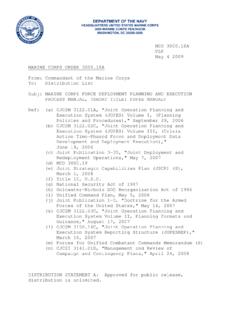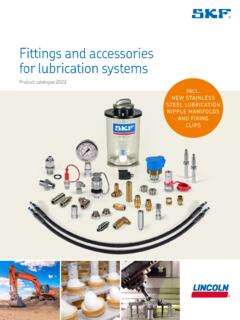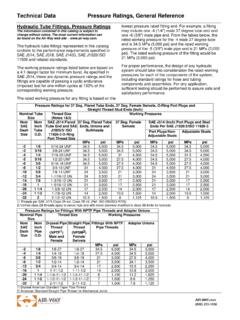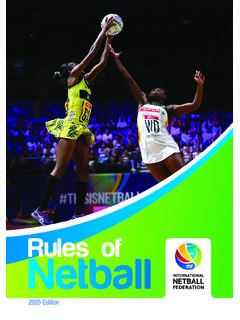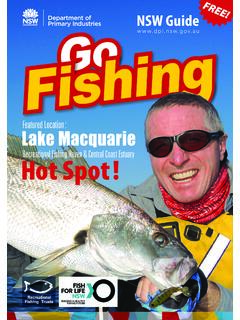Transcription of ANCHORING, MOORING, AND TOWING - GlobalSecurity.org
1 CHAPTER 7. ANCHORING, MOORING, AND TOWING . LEARNING OBJECTIVES. Upon completing this chapter, you should be able to do the following: 1. Describe and identify anchors and their related appendages. 2. Describe the standard methods for anchoring and mooring ships. 3. Describe the procedures for rigging and unrigging for TOWING a ship and for being towed. State the basic rules for adjusting lines during the tow. 4. Identify and describe the principal types of salvage. INTRODUCTION Federal Supply Catalog lists standard sizes from 3/4 to 4 3/4 inches. Wire diameter is measured at the end and a In chapter 4 we discussed the procedures involved little above the center line of the link. The length of a in tying a ship up to a pier. In this chapter, we discuss standard link is 6 times its diameter; its width is how to anchor a ship and moor it to a buoy. We also times its diameter.
2 All links are studded; that is, a solid briefly cover TOWING and salvage. piece is forged in the center of the link. Studs prevent the chain from kinking and the links from pounding on ANCHORS adjacent links. Although several types of anchors are in use aboard Navy ships, mine countermeasures ships use a lightweight-type (LWT) anchor called the Danforth (figure 7-1). IDENTIFYING ANCHORS. Each anchor of over 100 pounds ordered by the Naval Sea Systems Command is assigned a serial number, which is cast or cut into the anchor before it is delivered. Serial numbers are found on the shank of lightweight anchors. These numbers must be recorded in the ship's anchor log. If you receive a new anchor, be certain to record the proper numbers. Do not confuse these numbers with other figures, such as the weight of the anchor. CHAIN AND ITS APPENDAGES. All Navy ship anchors are connected to some length of anchor chain.
3 Modem Navy anchor chain is made of die-lock chain with studs. The size of the link is determined by its diameter, called wire diameter. The Figure 7-1. Lightweight-type (LWT) anchor. 7-1. Heavy-duty and high-strength die-lock chains are DETACHABLE LINKS. Shots of anchor physically similar to some of the smaller sizes of chain are joined by a detachable link, shown in standard die-lock chain but have higher breaking figure 7-2. The Navy type of detachable link strengths. Size for size, the links fit the same wildcat consists of a C-shaped link with two coupling (windlass drum). plates, which form one side and the stud of the link. A taper pin holds the parts together and is locked in place at its large end by a lead plug. Chain Nomenclature Detachable link parts are not interchangeable, so A chain is made of many parts besides links, and a matching numbers are stamped on the C-link and variety of equipment is used to maintain the chain.
4 The on each coupling plate to ensure identification following paragraphs describe a chain and its associated and proper assembly. You will save time and hardware: trouble trying to match these parts if you disassemble only one link at a time and clean, STANDARD SHOTS. The lengths of chain that slush, and reassemble it before disassembling are connected together to make up the ship's another. When you reassemble a detachable anchor chain are called shots. A standard shot is link, make sure the taper pin is seated securely. 15 fathoms (90 feet) long. Each shot of chain You can do this by driving the pin in with a punch usually bears a serial number, either stamped or cut at the time of manufacture, on the inner side and hammer before you insert the lead plug over of its end links. If an end link is lost or removed the pin's large end. Detachable link toolbox sets from a shot, this identification number should be contain tools and parts, including spare taper either cut or stamped on the inside of the new end pins and lock plugs, for assembling and link of the altered shot.
5 Disassembling links and detachable end links. Figure 7-2. Detachable link. 7-2. minimizes kinking and twisting of the anchor chain. OUTBOARD swivel SHOTS. Standard outboard swivel shots (fig. 7-4), also termed bending shots, consist of detachable links, regular chain links, a swivel , an end link, and a bending shackle. They are fitted on most vessels to attach the anchor chain to the anchor. They also make it possible to stop off the anchor and break the chain between the windlass and the anchor. The taper pins in the detachable links in the outboard swivel shot are additionally secured with a U-shaped, stainless steel, wire- locking clip (sometimes called a hairpin). This Figure 7-3. Chain swivel . hairpin, inserted in holes drilled through the coupling plates, engages a keyway or groove on the taper pin. (See figure 7-2.). BENDING SHACKLE. A bending shackle is RIDING, HOUSING, AND TOWING .
6 Used to attach the anchor to the chain. CHAIN STOPPERS. Chain stoppers are used to hold the anchor taut in the hawsepipes, to ride CHAIN swivel . A chain swivel (fig. 7-3) is at anchor, or to hold the anchors when the anchor furnished as part of the outboard swivel shot. It chain is disconnected for any reason. Riding and Figure 7-4. Outboard swivel shot. 7-3. Figure 7-5. Chain stopper. housing chain stoppers (fig. 7-5) consist of a turnbuckle inserted in a short section of chain with a slip or pelican hook attached to one end of the chain and a shackle at the other end. The Figure 7-7. Mooring shackles. housing stopper is nearest the hawsepipe, the riding stopper is farther aft. These stoppers are secured by the shackles to permanent pad eyes on the vessel's deck. When in use, a stopper is attached to the anchor chain by straddling a link with the tongue and strongback of the pelican Figure 7-8.
7 Mooring swivel . hook. Special housing chain stoppers, such as the devil's claw or the paw1 type of stoppers, normally are used with horizontal windlasses and where space limitations do not permit use of of the TOWING hawser. TOWING chain stoppers should be Navy standard stoppers. Although stoppers used whenever the ship is being towed. alone are more than adequate for holding the anchor, they should be backed up with the MOORING SHACKLES. Mooring shackles wildcat brake. Upon anchoring, you should first are forged steel shackles (fig. 7-7) that are used set the wildcat brake band, then set the stoppers to attach anchor chains to mooring buoys. All tight, making sure you equalize the tension on mooring shackles, regardless of size, have a them, so that one is not loaded more than the standard mortise (opening) of 7 inches. Mooring other. The wildcat should be left disconnected shackles should not be used for any other from the windlass.
8 A Navy standard chain purposes. stopper is shown in figure 7-5. MOORING SWIVELS. Forged steel swivels, TOWING chain stoppers are similar to riding and with two links attached at each end (fig. 7-8, are housing chain stoppers, except that TOWING chain used to moor with two anchors. They are stoppers have locking plates added. (See fig. 7-6.) inserted in the chain outboard of the hawse and These locking plates prevent the TOWING chain stopper keep the chain from twisting as the ship swings. from unscrewing when subjected to the shock loading Mooring swivels should be attached in the chain Figure 7-6. Anchor chain stopper modified for TOWING . 7-4. Figure 7-9. Cable jack. with the eye-end outboard, or down, to prevent large enough to engage a link of the anchor chain them from hooking on the outer lip of the hawse at the other end. This pendant is used to moor or when they are heaved back aboard.)
9 However, clear a hawse. Information on dip shackles and most ships today have large rounded lips on the proportional dimensions for the different sizes of hawsepipes, making it unlikely that a reversed chain are given in NSTM, chapter 581. swivel will catch. Anchor Chain Markings CHAIN CABLE JACKS. A cable jack (fig. The detachable links of anchor chain are painted 7-9), consisting of a lever mounted on an axle red, white, or blue as follows: red, to indicate 15. and two wheels, is used to handle anchor chain in fathoms; white, 30 fathoms; blue, 45 fathoms; red, 60. sizes 2 3/4 inches and above. It is used to pick the fathoms; white, 75 fathoms; and so on. chain up to pass a chain stopper. A pinch-point crowbar type anchor bar is issued for smaller At the 15-fathom mark, one link on each side of the sizes of chain. detachable link is painted white, and one turn of wire is wrapped securely around each stud.
10 At the 30-fathom CLEAR HAWSE PENDANT. A clear hawse mark, two links on each side of the detachable link are pendant is a wire rope pendant, 5 to 15 fathoms painted white, and two turns of wire are wrapped around long, with a thimble at one end and a pelican each of the last white studs. At the 45-fathom mark, hook attached to a length of open-link chain three links on each side of the detachable link are fitted in a thimble at the other end. It is used in painted white, and three turns of wire are wrapped clearing a hawse fouled by the anchor chain. around each of the last white studs. At the 60-fathom (See fig. 7-10.) mark, four links on each side of the detachable link are painted white, and four turns of wire are wrapped DIP ROPE. A dip rope is a fiber rope pendant, around each of the last white studs, and so on, for each fitted at one end with a thimble and a dip shackle shot.
